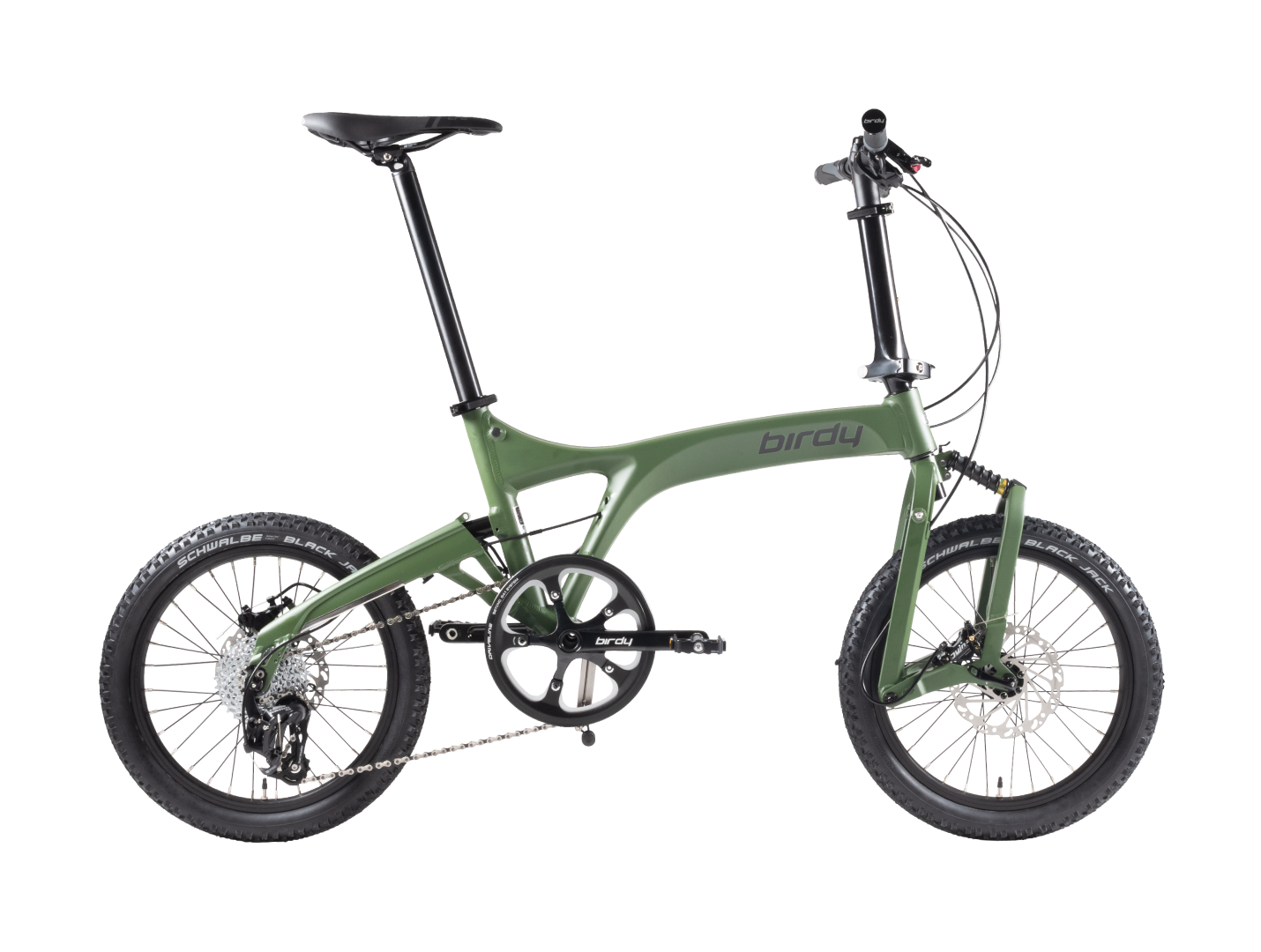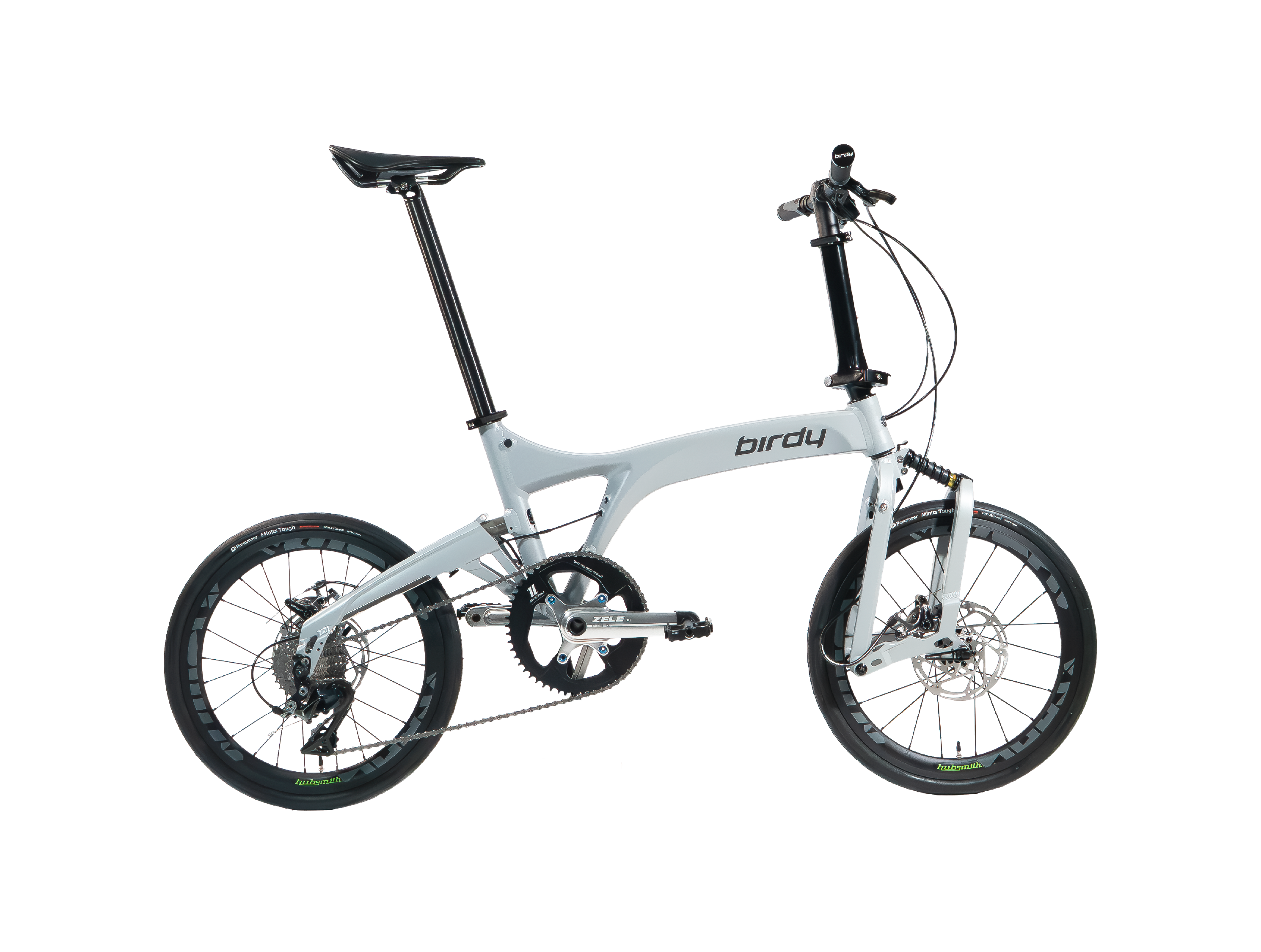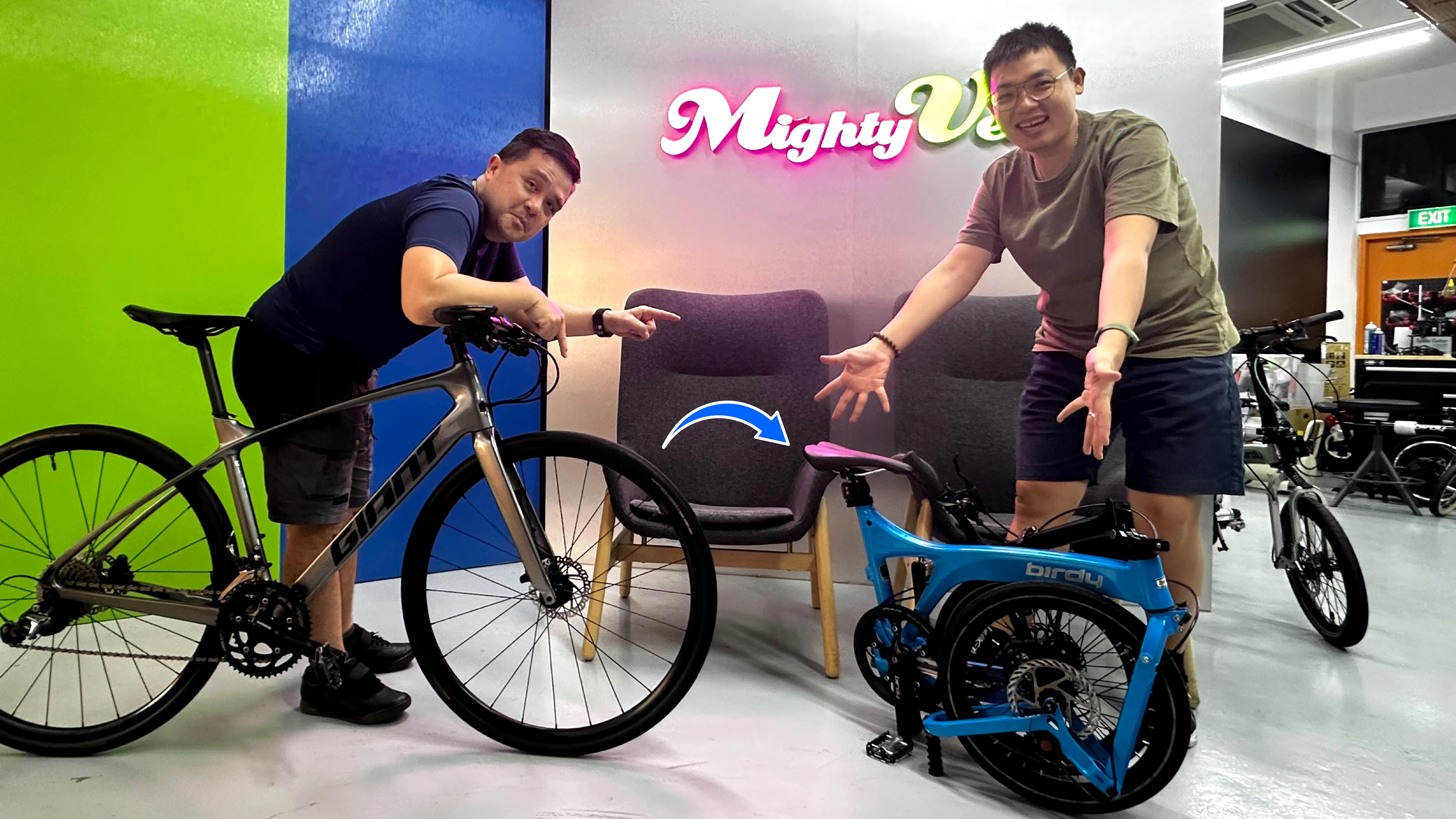INTRODUCTION
In the world of cycling, few brands have managed to blend convenience, comfort and performance as seamlessly as the Birdy folding bicycle. Renowned for its innovative design and versatility, the Birdy is now a mainstay amongst foldable bike enthusiasts across the world. So it may come as a surprise to many that the Birdy originated as a prototype in a German garage, welded together from spare parts. How did it develop from such humble beginnings to become the icon it is today?Saddle up and join us as we pedal through the history of the Birdy Bicycle.
TIMELINE
- 1988: Markus Riese and Heiko Müller meet in the Technical University of Darmstadt.
- 1992: First Birdy prototype is created.
- 1993: The Birdy wins the Special Award in the 1993 Hesse Innovation Award. Riese and Müller is founded.
- 1994: The Birdy is exhibited in the IFMA show in Cologne. George Lin invites Markus and Heiko to come to Taiwan and make their folding bike dream a reality.
- 1995: The Birdy hits the market and becomes a hit.
- 2006: The Gen 2 Birdy is introduced.
- 2015: The Gen 3 Birdy is introduced.
1988
Sometimes, a coincidence can change the world. Markus Riese and Heiko Müller first met on the very first day of their course at the Technical University of Darmstadt, where they were studying mechanical engineering. They quickly bonded over their love of cycling and travel, and passion for invention, best exemplified in their shared hobby of modifying bicycles.
During a cycling tour in Tunisia in 1991, Markus and Heiko encountered an unexpected obstacle when the wheels of their bikes got stuck in the desert sand. They took this time to discuss their aspirations for the future, and realised they had something else in common: a burning desire to change the cycling world.

1992
This was the year Markus hit upon the world-changing idea they had been looking for: a bike that he can take and ride anywhere, but that also retains a full-sized bike’s performance and comfort. To accomplish this, he envisioned a groundbreaking new folding mechanism that could also serve as a suspension pivot. At that time, full-suspension systems were uncommon in city bikes, especially foldable ones. A foldable bike with both front and rear suspension was a new and exciting idea. Markus first made a cardboard model to demonstrate his idea to Heiko, who came onboard immediately. Using a borrowed welding machine and working in their parents’ garage, they used miscellaneous parts taken from two old bicycles to build the first Birdy prototype ever. Test rides showed that this concept worked!

1993
Excited about the potential of their invention, Markus and Heiko submitted it for the 1993 Hesse Innovation Award. In just 10 tireless days, and several sleepless nights, they produced a fully working prototype out of aluminum: full-suspension, folding, and bright red.
A foldable bike that made you feel as light as a feather while riding it? There was nothing else quite like it at the time. While Markus and Heiko didn’t win the main Hesse Innovation Award, they did win the Special Award, further motivating them to pursue this dream.
The company Riese and Müller was born. But it might surprise you to learn that the Birdy wasn’t their main product at the time — in fact, it had yet to enter production! At its founding, Riese and Müller primarily sold Hot Ears, earmuffs that could keep the ears warm even under a bicycle helmet. But Markus and Heiko were still focused on making the Birdy a reality.

1994
Riese and Müller exhibited the Birdy prototype in a small booth at the IFMA show in Cologne. By yet another fortuitous coincidence, George Lin, a Taiwanese entrepreneur, was visiting the show. He was immediately impressed by the Birdy.
At that time, George had been looking for a way to break into the Japanese bike market — a challenging task, since most Japanese cyclists lived in relatively small apartments with no garages. There was little space to fit a bike! A foldable, high-performance bike like the Birdy was exactly what he had been looking for. He invited Markus and Heiko to come visit his company, Pacific Cycles, and work with him to develop the Birdy.
Markus and Heiko knew this opportunity was too good to pass up. For six months, they took turns visiting Pacific Cycles in Taiwan, staying at George Lin’s house while they were there. Mass production of the Birdy began.

1995
Finally, the Birdy bike hit the market. Sales first began in Germany, where the product was warmly received by cyclists. It took another two years for the Birdy to launch in Japan, and from then on there was no stopping its rise in global popularity.
Designed in Germany, made in Taiwan, acclaimed worldwide — the Birdy was a resounding success. Markus and Heiko’s dream had finally been realized.

2006
The Gen 2 Birdy entered the market, further evolving the winning Birdy formula. It boasted a lighter monocoque frame, greater support for the seatpost, and a great variety of new component choices.

2015
Twenty years on, the Birdy continued to enjoy worldwide popularity. But its designers and manufacturers remained hard at work. The Gen 3 Birdy, the latest evolution of high-performance foldable bicycles, was introduced. Its main feature was a more rigid and compact single-weld monocoque frame, along with a host of other design innovations.

CONCLUSION
In conclusion, our fascinating journey through the history of the Birdy Bike reveals a tale of innovation, determination, and a commitment to redefine urban commuting. From its humble beginnings in the late 20th century to its evolution into a global foldable bike icon, the Birdy Bike stands as a testament to what hard work and ingenuity can accomplish.
If you’d like to get one of these amazing folding bicycles for yourself, check out Mighty Velo: Singapore’s premier folding bike shop! The range of Birdy bicycles they carry range from road bikes such as the JK11 Ace to rugged gravel bikes such as the Birdy Gravel. There’s something for everyone!














.png)
-01.png)







.webp)

.webp)









.webp)


.webp)
.webp)
















.jpg)







































